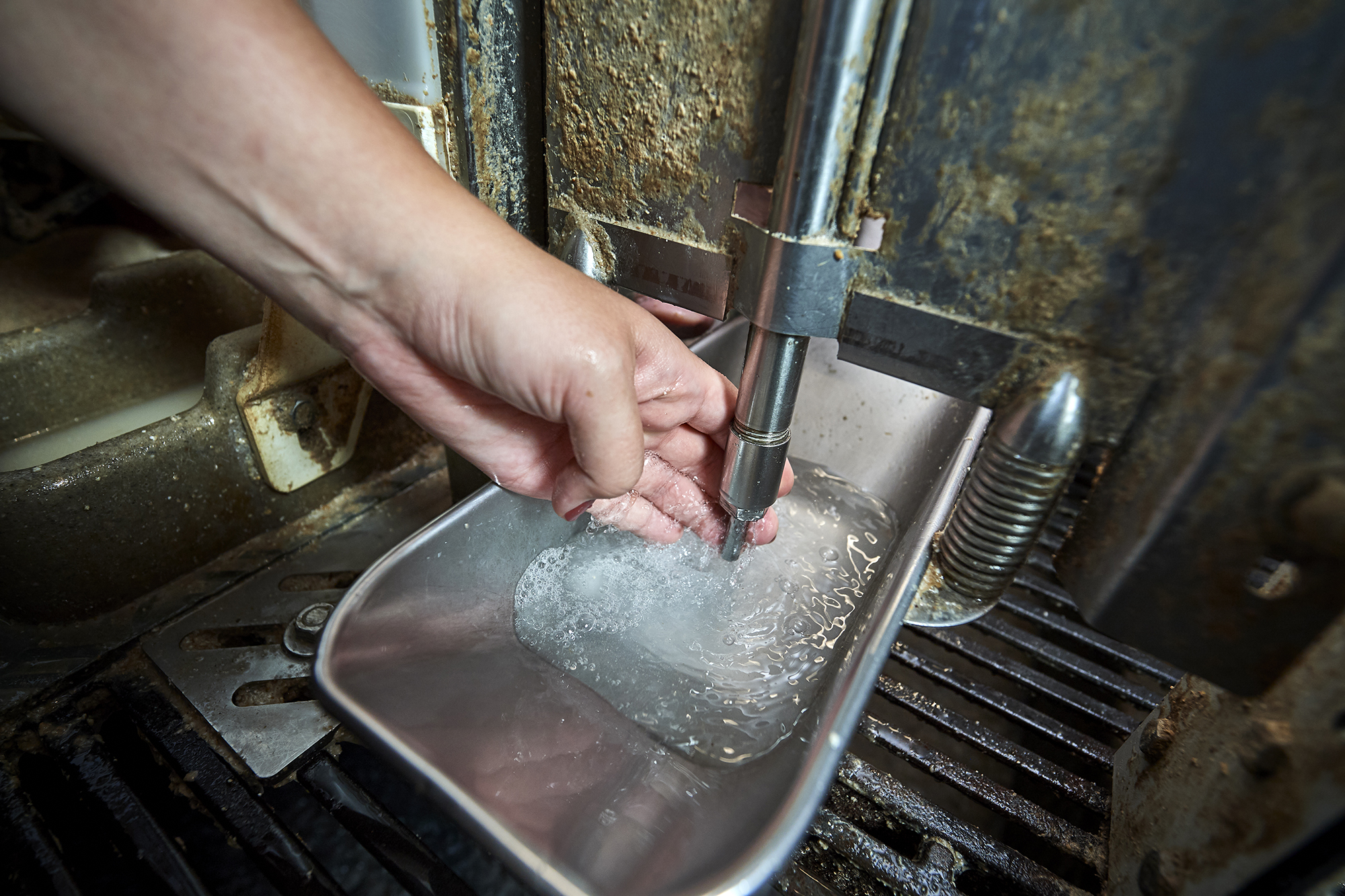Growers – Pigs from 30 – 60 kg
Target:
- High feed efficiency.
- High daily gain.
- Healthy pigs.
- Equal growth weight among the pigs.
Feeding growers
Choosing the best feeding strategy to achieve the highest economical outcome in terms of growth, lean meat and feed consumption depends on several factors.
The table below shows the recommended content of energy and selected nutrients per kg feed in different weight stages. SID refers to the Standardized Ileal Digestible content.
| Energy, per kg feed | 20-45 kg | 30-45 kg | 30-60 kg |
|---|---|---|---|
| MJ ME/kg feed | 13.8 | 13.6 | 13.5 |
| MJ NE/kg feed | 9.8 | 9.7 | 9.6 |
| Danish Feed Units, FU/kg feed | 1.10 | 1.09 | 1.08 |
| Basic nutrients, digestible per kg | |||
| Protein. SID min g/kg | 145.2 | 140.6 | 138.2 |
| Lysine. SID g/kg | 10.7 | 10.0 | 9.6 |
| Digestible phosphorus. g/kg | 3.0 | 2.8 | 2.7 |
| Calcium without phytase. g/kg | 8.6 | 8.3 | 8.0 |
The full nutrient tables can be found here.
Feed accessibility
The market situation can influence the choice of strategy, though reduction of feed cost while maintaining or maximising growth performance will always be beneficial. One of the factors that can be changed if the market situation requires action is the feeding method.
The recommended feeding method and energy level for growers are mentioned below
| Weight | Preferred feeding method |
|---|---|
| 30 – 60 kilos | Semi ad libitum |
Feeding scheme when using liquid feeding
If using a liquid feeding system, it is recommended to feed 4 times a day, and the pen layout must accommodate that all pigs can eat at the same time. Make sure to distribute the feeding times evenly across the day optimally with 6 hours intervals.
Check that the pigs eat the full ration. If any feed is left over 30 minutes after feeding, the daily feed allowance should be reduced. On the other hand, if the troughs are empty after 10 minutes you need to increase the daily feed allowance.
Feeding scheme when using dry feeding
If using a dry feeding system, it is recommended to make sure feed is available 24 hours a day. The exception from this is in farms which can benefit from lowering the daily feed intake a bit, in this case, it is recommended to use a night break in feeding.
To support a continuously high feed intake, access is important. This includes having enough feeding space for each pig as well as installing feeders with easy access without encouraging feed waste.
Ensure correct adjustment of the feeders where fresh feed is flowing continuously 24 hours a day. Empty feeders will decrease feed intake and can create behavioural issues among the pigs. Overloaded feeders spilling to the floor, can besides being a waste of money also reduce appetite and lead to a low daily gain.
Ensure the troughs are cleaned regularly at least once per day – feeder settings should be adjusted accordingly.

Feeders with the correct setting will encourage the pigs to have a high feed intake and the waste of feed will be limited.

A standard feeder for growers and finishers. The feeder capacity must fit the pen capacity to keep the growth level optimised. The feeder shown is shared between 2 pens and can feed 36 slaughter pigs within a weight range of 30-110 kg this corresponds to no more than 18 growers per pen.

Opening the feeder too much will waste feed and can decrease feed intake as the pigs do not want to eat the old feed. In this case, the feeder should be adjusted immediately and the amount of feed dispensed should be checked at the next inspection.
Water supply for growers
Sufficient amounts and quality of water are crucial for optimal growth.
The water supply must be designed with easy access for all animal sizes and must support several weaners drinking at the same time. Recommendations on water quality can be found here.
 |
 |
Correct water flow throughout the production facility is important. The water supply should be able to maintain sufficient flow rates for all drinkers while the main part of the drinkers is in use.
| Type of water supply | Needs | Pigs per drinker | Comment |
|---|---|---|---|
| Drinking bowl | Min. 1 l/min. | 15-30 pigs/bowl | |
| Drinking nipple | Min. 0.5 l/min.
Max. 0.8 l/min. |
10 pigs per nipple | Minimum 2 nipples per pen. |
* Due to growth, health and welfare, a backup water supply should always be available for the pigs in case of defects.
Everyday tasks among the growers
Inspect all animals at least once, but preferably twice, a day
Pay particular attention to:
- Health – do any of the pigs or the environment show signs of disease?
- Do all pigs get up? If not check if the animal is sick or hurt.
- Check the feed dispensers and water nipples – check them and keep them clean.
- Once per week or every 14 days, control weighs 10% of the pigs/pens to ensure that the growth is on track.
